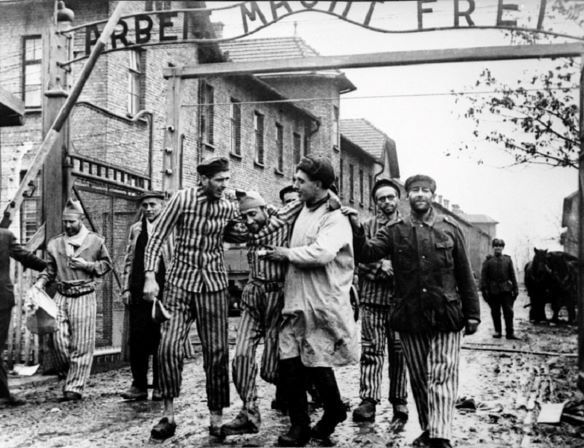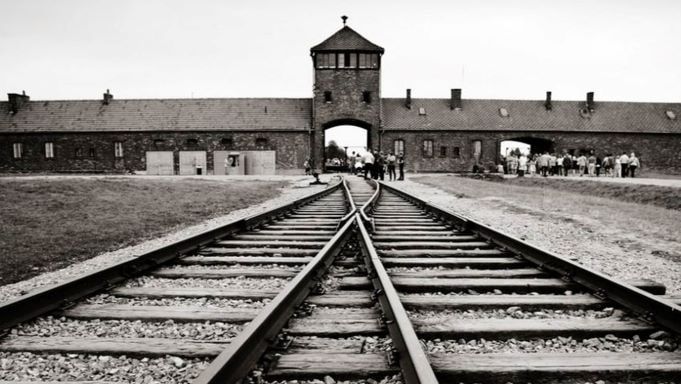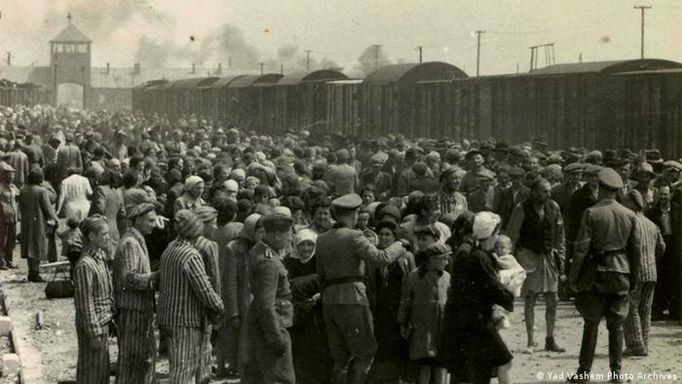International Day of Commemoration in Memory of the Victims of the Holocaust
On the occasion of the International Day of Commemoration in Memory of the Victims of the Holocaust, it is necessary to educate with the awareness that the human condition is diverse and plural.

The memory and testimony of the victims of the Holocaust serve to try to understand the incomprehensible: the extermination of six million Jews, the slaughter of millions of people in the event considered the height of human barbarism, and to reflect on how indifference is built when we see suffering, even today, groups of persecuted and exiled people in the world, says Judit Bokser Misses-Liwerant, an academic at the Faculty of Political and Social Sciences (FCPyS) of the UNAM.
How far can the human condition go? Was what happened in World War II an exception? Will events like that one continue to accompany us? Just as there are different ways of discriminating, genocide is not just one; the catastrophe was singular, but all of them are condemnable, reprehensible, and lead us to think about how we internalize situations and fail to notice their progressive development. The purpose of history is to clarify what happened and what can happen again. That is why the slogan of the extermination of the Jewish people at the hands of the Nazis, "Never again", can also guide us to other realities where there has been persecution and slaughter.
On the occasion of the International Day of Commemoration in Memory of the Victims of the Holocaust, the member of the National System of Researchers and the Mexican Academy of Sciences, highlights the role of education to minimize hateful ideologies. It is the best way to commemorate and honor those who died, and thus perpetuate this remembrance; we cannot allow it to be diluted in the ephemeral nature of date. On a day like this, we must call on different levels of society and governments to promote that Hitler's "final solution" is not absent when children and young people study world history.
We still have a lot of ground to explore in this area, the expert believes. And this is urgent when today, one of the expressions of anti-Semitism is precisely the denial of the Holocaust. On the other hand, she says, "there are groups that are discriminated against in our society, in the most external form: material, cultural, social, such as indigenous people or religious minorities, but also in more hidden forms, not immediately visible, that have to do with stereotypes and prejudices. We must ask ourselves if to respect the other we have to be equal, or if we can learn to live amidst difference. Otherness is circular and we must educate with the awareness that the human condition is diverse and plural".
January 27 commemorates the liberation of the largest concentration and extermination camp, Auschwitz-Birkenau, by Soviet troops in 1945; the United Nations General Assembly officially proclaimed this commemoration in 2005.
When the soldiers entered the site "they found only a few thousand starving prisoners alive. There was abundant evidence of mass extermination. The Germans had destroyed most of the warehouses in the camp, but in those that remained, the Soviets found the victims' belongings. They discovered, for example, hundreds of thousands of men's suits, more than 800,000 women's dresses, and more than 14,000 pounds of human hair" (Encyclopedia of the Holocaust, United States Holocaust Memorial Museum, https://encyclopedia.ushmm.org/es). In the following months, Soviet, British, and American troops liberated the rest.

Shoah
Although there have been massacres and murders in the history of mankind, the Holocaust (Shoah, in Hebrew) was unprecedented. Within Nazism, the persecution and extermination of the Jewish people was not something marginal or lateral, but the axis of a series of intentional and premeditated actions to achieve that goal.
Even though the victims also included gypsies, communists, homosexuals, or Soviet prisoners of war, the Jewish people were the central target of the regime headed by Hitler. "Destruction, murder and the disappearance of communal life were an end in themselves, and a state channeled its efforts, governmental institutions, and industrial, technological, economic and scientific capabilities, to commit this massive attack," recounts Bokser Misses-Liwerant.
"Six million Jews perished, a figure that constitutes two-thirds of the nine million who inhabited Europe before World War II, and one-third of the total Jewish population in the world at the time." (The Face of Truth. Testimonies of Holocaust survivors who came to Mexico. Direction and coordination of the project: Sharon Zaga Mograbi and Emily Cohen Cohen, Memoria y Tolerancia, A.C., 2003).
The ghettos (such as those of Lodz and Warsaw, where 112,463 people died from starvation and disease from 1941 to 1942); the firing squads (Einsatzgruppen), which murdered 1,200,000 Jews in the different territories taken by the Germans; or the six extermination camps, such as Treblinka, where nearly 870,000 men, women and children died, were the culmination of this process.

The aim was to annihilate without leaving a trace, disappearing anything that could bear witness to what the Nazis did, and in the face of the pain and the challenge of what the Shoah meant, "memory became a resource for the affirmation of the actors themselves," says the university professor. It is a way of sustaining what in Hebrew and the Jewish historical tradition is the imperative of the verb zachor, remember!
After the Holocaust there was a conspiracy of silence; it is not that the victims refused to speak: they did not want to listen to what was an absolute nightmare in the face of a 20th century that bet on rationality, civilization, progress, and science. "When that is broken, when there is a recognition and new sources of study, as well as a greater awareness that this history marked the Hebrew people and humanity; at that moment it is possible to confront the memory, and also those who today want to erase it," she emphasizes.
Today, this remembrance is demanded in the face of doubts about the veracity of history, when its realization is questioned and the facts are distorted in society and social networks. To question this reality is an act of anti-Semitism. Therefore, today more than ever it is imperative to remember to pay homage to those who left, to learn, for the present and the future.

"The day of liberation arrived. When we saw the gate open, we began to walk and shout without knowing for sure what was happening. It was the Americans who liberated us. They fed us and many lost their lives because their bodies could not stand the food. This is how my older brother died," mentions one of the testimonies compiled in The Face of Truth, by Shie Gilbert Pianko.
Prisoner 73670, born in the town of Ciechanow, Poland, on August 9, 1920, survived stays in three ghettos and three of the most terrible death factories ever conceived by man: the Auschwitz-Birkenau concentration camp, in Poland, and those of Mauthausen and Ebensee, in Austria, reads in An introduction to the book The Last Survivor, by Arón Gilbert (Solar Editores, 2007, https://issuu.com/zenker/docs/el_ultimo_sobreviviente).
Visiting UNAM in 2004, Shie Gilbert Pianko recounted that at the end of the conflict that left him without family members - he was the only one of 63 who survived - he arrived in Mexico. He did not know this society, but decades away he said he was proud to be Mexican. "There is no other town like it, they welcomed me with open arms. I will soon be a great-grandfather and I achieved everything here," recalled the then 84-year-old man.
Judit Bokser recalls that they arrived in countries and communities where they were seen as someone returning from the "beyond", and had to recover from the daily hell they endured to build a family and take root, a process that was not easy either. After total dehumanization, after losing everything, even their name for a number tattooed on their arm, the survivors should be considered heroes. Seventy-seven years after the end of World War II, "today we know how much the forced migrants suffer".




